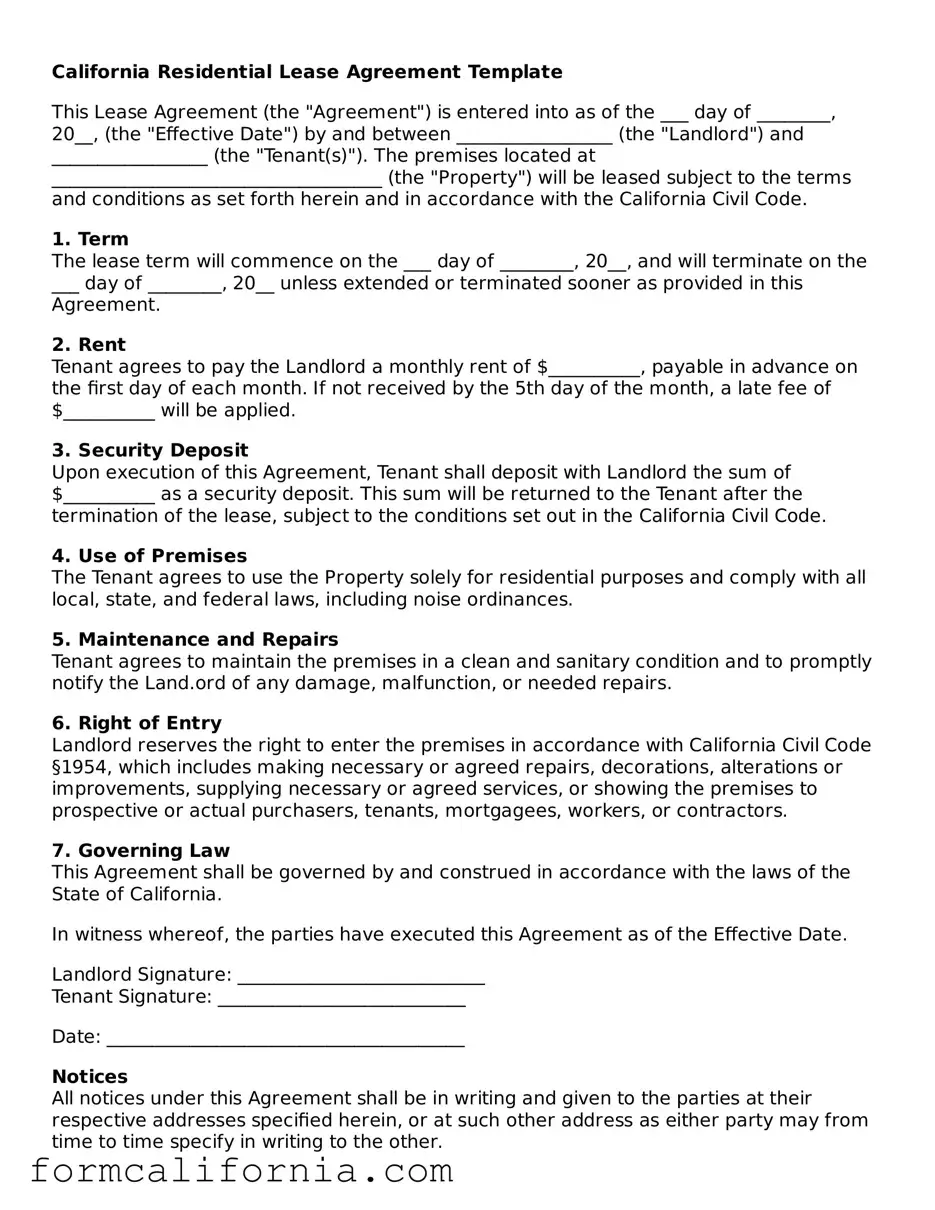California Residential Lease Agreement Template
This Lease Agreement (the "Agreement") is entered into as of the ___ day of ________, 20__, (the "Effective Date") by and between _________________ (the "Landlord") and _________________ (the "Tenant(s)"). The premises located at ____________________________________ (the "Property") will be leased subject to the terms and conditions as set forth herein and in accordance with the California Civil Code.
1. Term
The lease term will commence on the ___ day of ________, 20__, and will terminate on the ___ day of ________, 20__ unless extended or terminated sooner as provided in this Agreement.
2. Rent
Tenant agrees to pay the Landlord a monthly rent of $__________, payable in advance on the first day of each month. If not received by the 5th day of the month, a late fee of $__________ will be applied.
3. Security Deposit
Upon execution of this Agreement, Tenant shall deposit with Landlord the sum of $__________ as a security deposit. This sum will be returned to the Tenant after the termination of the lease, subject to the conditions set out in the California Civil Code.
4. Use of Premises
The Tenant agrees to use the Property solely for residential purposes and comply with all local, state, and federal laws, including noise ordinances.
5. Maintenance and Repairs
Tenant agrees to maintain the premises in a clean and sanitary condition and to promptly notify the Land.ord of any damage, malfunction, or needed repairs.
6. Right of Entry
Landlord reserves the right to enter the premises in accordance with California Civil Code §1954, which includes making necessary or agreed repairs, decorations, alterations or improvements, supplying necessary or agreed services, or showing the premises to prospective or actual purchasers, tenants, mortgagees, workers, or contractors.
7. Governing Law
This Agreement shall be governed by and construed in accordance with the laws of the State of California.
In witness whereof, the parties have executed this Agreement as of the Effective Date.
Landlord Signature: ___________________________
Tenant Signature: ___________________________
Date: _______________________________________
Notices
All notices under this Agreement shall be in writing and given to the parties at their respective addresses specified herein, or at such other address as either party may from time to time specify in writing to the other.
